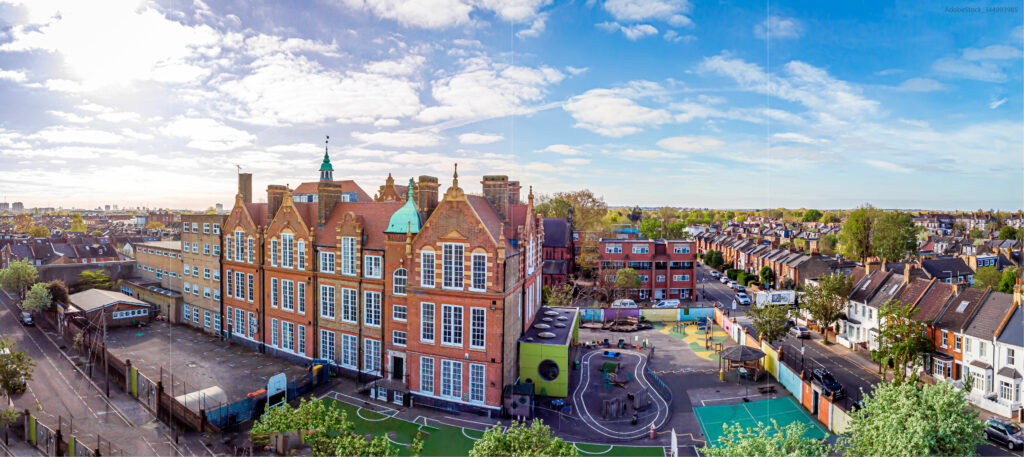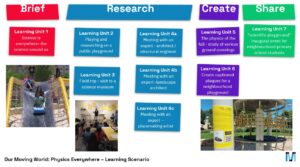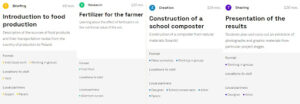
A scaffold for open schooling
In many countries around the world, there is an effort being made to promote smart, sustainable and inclusive growth, whilst strengthening the knowledge base of the society. This is no different in Europe, which faces a shortfall in science knowledgeable people, as outlined in the publication “Science Education for Responsible Citizenship”, written by the Expert Group on Science Education. However, one of the core arguments of this document outlines the need to encourage open schooling, a learning approach where purposeful collaborations are built between schools and their wider communities.
Over the past 10 years, there has been a considerable drive towards “opening up” education, through sharing resources to testing out new educational practices. Between 2017 and 2020 the EU project Open Schools for Open Societies (OSOS) contributed to this direction by campaigning for open schooling across Europe involving over 1000 schools. However, much to the success of this project, as noted by Bloomfield Science Museum Jerusalem, one of the partners in OSOS, it became clear that there was something missing. Schools shared interest but sought materials, content and clear guidance on open schooling and how “opening up” could work in practice. What was needed was some kind of scaffold that schools could use. The EU project Make it Open, which we are a part of, aims to solve this missing piece through “Learning Scenarios”, which include four building blocks: Brief, Research, Create, and Share.
The Make it Open Learning Scenarios
A Make it Open Learning Scenario (LS) consists of various activities, called Learning Units, and steps that support schools’ transition into open schooling. Unlike traditional pedagogical methods, the Make it Open LSs are based on key open schooling dimensions such as:
- LOCATION (where): extending the learning environment beyond the school walls
- TEACHING ROLES (who): others taking on the teaching role
- COMPONENTS (what): The tangible elements, which make up the open schooling project and enable it to happen through diverse means
- TIME: happens inside or outside of school hours
- QUALITIES (why and how): particular features and benefits of the open schooling project e.g. equity, learning by doing.
However, the LSs expand these dimensions to include two further dimensions:
- Curriculum connections: organised around topics ensuring LSs relate to at least two core subjects e.g. life sciences and engineering and technology.
- Engagement with the community: addressing challenges that are relevant to the community and provide opportunities for collaboration with community stakeholders.
More can be read about these dimensions on Make it Open’s recent publication “What is open schooling?”.
LS topics range from food to air pollution lasting anywhere up to 180 minutes long and have been constructed in such a way that each LS incorporates a step by step scaffold that teachers can follow, adapt or even iterate on depending on community/curriculum needs. These steps are the core building blocks and consist of a brief, research, create and share component as outlined below:

Arriving and agreeing on such a scaffold was met with questions of intent and purpose. How do we make sure this scaffold is applicable for schools all over Europe? How do we form such a scaffold that is easy for teachers new to open schooling and yet adaptable for teachers with more experience? Ensuring these questions were answered, Make it Open co-designed all LSs with the help of teachers from schools in the UK, Israel, Netherlands and Poland. These teachers helped test the LSs in real-life situations within their own schools, allowing the LSs to be improved upon.
Early in the process, it was decided that the LSs would be tailored towards students aged 9-15 due to this period being the time students develop their identity and interests – all of which are major factors in future educational and career choices – and from some early anecdotal evidence, this decision is working. One teacher from Israel explained:
“I was surprised by the growing interest in the subject. Some students would like to know even more about this topic than we anticipated in this project.”
There are currently 16 LSs in production which will be housed on the open schooling navigator in May 2022. Until then the LSs will be further tested. What Make it Open is trying to do is reduce the barrier for entry for open schooling to a point that teachers feel empowered and confident in their open schooling teaching ability inside and also most importantly, outside of the school.

Want to be involved in Make it Open?
Our next step is to test the Make it Open framework during the 2022-2023 school year across 10 countries in 150 schools: Greece, Hungary, Israel, The Netherlands, Poland, Portugal, Romania, Spain, Sweden and the UK. If you want to be a part of this open schooling movement, leave us your contact details and we will contact you once we kick off this next phase. Or you can simply share this article with your own network.
Visit the Make it Open website or get in contact with Ecsite – The European Network of Science Centres and Museums.